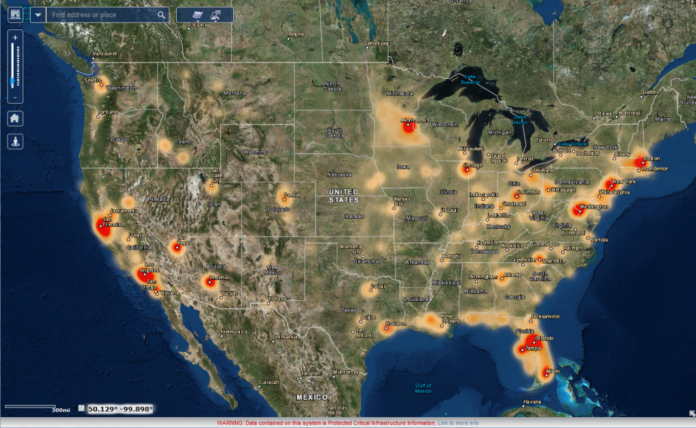The federal government collects, maintains, and uses geospatial data to improve decision making and to support numerous functions, including national security, law enforcement, and health care. Many activities depend on critical analyses of geospatial data, such as maintaining transportation infrastructures and quickly responding to natural disasters, such as floods, hurricanes, and fires. However, some data is collected multiple times by Federal, state, and local entities, resulting in duplication of effort and resources.
The Geospatial Data Act of 2018 (GDA) requires each covered agency to fulfill 13 responsibilities to foster efficient management and use of geospatial data — information linked to specific geographic locations. The GDA also mandates the Office of Inspector General (OIG) to submit to Congress a biannual audit report on the agency’s progress fulfilling the GDA’s responsibilities.
The collection and use of geospatial data are especially critical for the Department of Homeland Security (DHS) to support its diverse range of missions encompassing law enforcement, border protection, emergency management, critical infrastructure protection, and national operations. For example, after Hurricane Harvey in 2017, the Federal Emergency Management Agency used geospatial data to assist with response and recovery efforts.
In the second of a series of audits assessing the Department of Homeland Security’s compliance with the GDA, OIG said progress has been made but more work remains.
In particular, since OIG’s 2020 audit, the watchdog found that DHS has made progress towards fulfilling the 13 responsibilities in the GDA. OIG previously reported that DHS had fulfilled only one responsibility — appointing a contact to coordinate with the lead agencies regarding the geospatial data DHS uses. Since then, DHS met four additional responsibilities: (1) promoting the integration of geospatial data from all sources; (2) coordinating with various Federal and non-Federal entities to efficiently and cost effectively manage geospatial data; (3) making geospatial information more useful; and (4) ensuring that a person receiving Federal funds for geospatial data collection provides high-quality data.
Although DHS generally improved its compliance with GDA responsibilities, the audit found that it has only partially met seven responsibilities, including increasing staffing, and not met one. OIG believes that the delay fulfilling five of these remaining eight responsibilities may have occurred, in part, because DHS has not completed a comprehensive inventory of all its geospatial assets.
DHS must comply with the relevant data and metadata standards when sharing geospatial data on those platforms. However, OIG found that DHS has not confirmed that comparable standards were being followed for the data it shares through its Geospatial Information Infrastructure and components may be sharing on their own platforms.
OIG made four recommendations to ensure DHS’ continued progress fulfilling its responsibilities under the GDA:
- Develop and execute a separate plan for implementing DHS’ geospatial data strategy or ensure the implementation plan developed for the Department’s Evidence-Based Data Strategy fully considers geospatial data and is consistent with the Geospatial Data Act of 2018.
- Pursue a legislative approach, concurrent with existing administrative efforts, for determining how DHS handles, secures, and shares sensitive-but unclassified geospatial data. As appropriate, the effort should be conducted in coordination with internal DHS stakeholders and in combination with any similar efforts undertaken by other agencies.
- Conduct the planned Geospatial Data Act of 2018-based workforce assessment to identify what additional staffing resources may be needed at both the departmental and the component levels to fulfill the responsibilities of the Geospatial Data Act of 2018.
- Confirm that all the platforms on which DHS shares geospatial data are following appropriate geospatial metadata standards.
DHS concurred with all four recommendations and plans to complete work to meet them by the end of the year.





